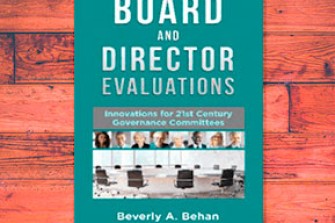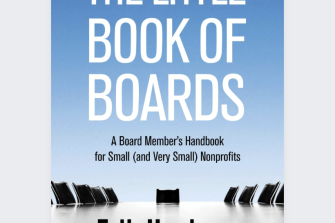The book follows that approach and leans on relevant work of Daniel Kahneman, Adam Grant, Charlie Munger and others. Based on others’ sound thinking, it offers simple rules for how to think clearly and make good decisions. It is in part a business book and in part self-awareness and personal development. No harm in that. Good leadership, as we know, starts with understanding the self.
Consistent with the book on decision making reviewed in Good Governance #92, everything starts with the end in mind: “all the successful execution in the world is worthless if it is not in service of the right outcome”.
Parrish notes that those who consistently appear to make good decisions have space to do so and are rarely forced or hurried by circumstances. It is far easier to make good decisions when you have the space to think clearly, but if poorly positioned, “even the smartest person can look like an idiot”. We all know people who seem endlessly busy cleaning up the consequences of prior poor decisions.
The first part of the book is about finding that space and managing your default behaviour. Failure to understand default behaviour will result in thinking badly or not at all. It provides a useful summary of human behaviour: defending our patch, group think (staying inside the tribe), maintenance of self-worth, resistance to change, the need to feel right (at the expense of being right)—the list goes on.
There is a good discussion of the ‘inertia default’ and consequent resistance to change. The ‘zone of average’ is a usefully framed concept and a dangerous place. This where things ‘ain’t broke’ and are working well enough, so why bother to think about change? It is useful to remember that the ability to adapt is the key determinant of survival.
Parrish suggests that if you don’t know where your vulnerabilities are, then your own default behaviours will exploit them to control the situation. This is akin to the Kahneman framing of Type 1 thinking (fast and reactive) and Type 2 thinking (slow and considered). A simple example common to most is the email drafted in anger at 5pm that—on reflection at 9am the next morning—is perhaps not the wisest response. Same idea: the person who can step out of the moment will simply perform better.
The middle sections have some excellent observations—not novel, but worth reminding ourselves of. People waste energy bargaining with how the world works instead of accepting it. Complaining simply distances you from reality. This is true in general terms but sometimes the world does need changing and we salute the people who have the energy to do so.
Parrish quotes a chief executive of a large US public company saying, over time, that he found the most valuable people weren’t the ones with the best initial ideas, but the ones with the ability to quickly change their minds. They were focused on outcome over ego—a core trait of a great board member in our view! Again, to reference Kahneman, he said in interview that he was delighted to be wrong on something as that meant he was more right across all other matters. This kind of thinking separates out exceptional people. We all make mistakes, but how we handle them is the key issue.
As we know from politics it is usually the cover-up that triggers the PR disaster.
The author outlines four steps in handling mistakes:
- accept responsibility
- learn from the mistake
- commit to doing better
- repair the damage as best you can.
The final section of the book moves from the personal to clear thinking in action and decision processes. Consistent with other approaches, he notes that decision making begins with clarity on the desired outcome and problem definition. The quip attributed to Einstein is relevant: “If I was given an hour to save the world, I would spend 55 minutes understanding the problem”. There is a tendency to hasty action so organisations often end up solving problems, any problems. The book offers a useful suggestion: build a problem/ solution firewall with two separate processes and possibly separate people. Then outline options, the more the better. Binary thinking probably means the problem has not been sufficiently understood; at least three options should be explored.
Next, evaluate your options against agreed criteria, which Parrish suggests should be simple, clear and free of jargon so that a twelve year old could understand them. The criteria should lead clearly to one option; if they don’t, this is “another sign that you don’t fully understand the problem and are operating out of fear that you’ll be wrong”.
Good decisions rely on good information—a variation of the GIGO principle, (garbage in, garbage out). Two useful acronyms are offered:
- HIFI (high fidelity) information, close to the source and unfiltered by other people’s biases and interests
- HIEX information comes from people with high domain knowledge or knowledge across a range of relevant areas.
And two other useful acronyms: ASAP—if the cost to undo the decision is low, decide asap. Or the opposite, ALAP—if the cost to undo is high, decide as late as practically possible.
There are useful commentaries on learning from decisions and communicating decisions down through a structure. Parrish reminds us that good decision making is about the process not the outcome. One bad result doesn’t make you a poor decision maker and one success does not make you a genius. Unless you record your process, reasoning and assumptions, you will never know if you were correct or just dumb lucky!
We contend that the role of a board is to make a small number of big decisions so that others can make hundreds of smaller decisions consistent with its intent. It follows that this is a core board skill and one that is often insufficiently studied.
Clear Thinking. Parrish, S. Cornerstone Press (Penguin) 2023








